In our travels through Florida we made sure to include a stop at DuPuis Wildlife Management Area, an excellent spot near Lake Okeechobee from which to explore a rural, historic Florida environment. Prior to acquisition by the water management district this land was originally used for cattle ranching, and most of the 21,875 acres in this preserve is upland. Some historic wetland areas on the south side of the preserve have been restored to allow water flows but most campers and hikers will not see any rivers, lakes, or swamps here. Instead, the environment is full of palmettos and slash pines, and presided over by daytime hawks and nighttime owls.
Free Camping at its Finest
When we first stayed at DuPuis almost exactly two years ago, we loved it immensely and it probably set the bar unreasonably high for other free camping sites. As we have learned, most free camping on public land — like dispersed camping in national forests or on Bureau of Land Management land — involves being totally unsupported: no designated spaces, no trash containers, no source of water, no dump station, no toilets, and of course no hookups. We are pretty well equipped to handle the challenges of true off-grid camping, but it is not our favorite situation. In low-cost public campgrounds located in national forests and on BLM land there are usually some services, like a trash container and vault toilets, but our favorite thing about them is having defined camping spots. We don’t mind having neighbors, but we like them to be in their own space while we enjoy our own space, and we’re more than happy to pay $10/night for the privilege of a clearly defined spot. National park campgrounds have nice well-defined spots (in excellent locations, of course) but typically offer only dry camping (no hookups), flush toilets (but no showers), plus potable water at the restrooms and a dump station.
Here at DuPuis, there is a pretty unbelievable combination of services for a place that is free to anyone with an easy-to-pull online permit. There are defined spaces identified by posts, and they are huge and the rig can be oriented any way you choose. There is a dumpster for trash collection. There are spigots with potable water. There is a dump station. There is a bathhouse with flush toilets and showers with hot water. There is even a camp host on site! Honestly, I really do not understand how this place is free, especially considering that the Florida State Parks could easily auction their spots off for princely sums in the winter. While I may be confused, I am certainly not complaining.
This was our first dry camping since Guadalupe Mountains in early November 2019, and it was reassuring to find that we still have the skills to manage our power generation and consumption. It was also fun to see the interesting mixture of different rigs that passed through during our stay. The 8-day stay limit ensures frequent turnover, but the free and public nature of the campground attracts many different campers with many styles of rig. Our neighbor in his mostly home-made “tranquility base” — with 500 watts of solar and a wind turbine — was particularly interesting to chat with. Tip for RVers: when obtaining your online permit, be sure to click “non-equestrian camping.” Even though the equestrian and non-equestrian camping areas are basically identical, are adjacent and share facilities, holders of an equestrian camping permit are required to present a horse upon arrival.
Hiking and Horses
Although it’s easy for me to go on and on about the wonders of free stuff, DuPuis is genuinely appealing in its own right. The equestrian facilities (barns and paddocks) were well-used during our visit and it was fun seeing people on horseback throughout the campground and headed out to the trails, including from our windows. Our visit coincided with new moon, but we are now spoiled for dark skies. The glow from the booming metropolis of Indiantown and the lights from the nearby state road 76 showed up quickly even in relatively short-exposure photos. However, all that ambient light makes the brightest stars stand out so it was fun to be able to identify our favorite constellations again. In true dark-sky places the main constellations are lost against the dazzling backdrop of millions of visible stars.
We enjoyed peaceful sunsets and relatively quiet camping — don’t get me started on our neighbor who decided to run a generator 6-8 hours a day for days on end before finally reaching the end of his stay — but the main attraction here is the trails. I particularly like that DuPuis is large enough that the hiking trails and equestrian trails are separate but overlapping networks. For us hikers it meant we only needed to spend a short distance on an equestrian trail from the campground to the main hiking loop, hopping over horse poop, but if we wanted to cut a hike short we had the option of taking shortcuts on the horse trails or along firebreaks. The main hiking trail is a very elongated oval that runs north to south, with east-west crossovers are various intervals. The sections of the loop are creatively named based on which crossover is used to return — Loop 1, Loop 2, Loop 3, and Loop 4. The portion of the trail named “Loop 2” is rated at 6.3 miles, but with the round trip from the campground to the trailhead it clocks in at around 7.5 miles. That’s our sweet spot for a day hike, and we enjoyed hiking Loop 2 multiple times. We didn’t see a lot of wildlife, other than hawks and buzzards overhead, but there was plenty of evidence of feral pigs in the form of uprooted fields. One day we spotted some industrious dung beetles rolling a giant ball that must have outweighed them substantially. Insects are amazing!
It was satisfying to get our hiking mileage back up and enjoy the serenity of quiet hikes where, as usual, we saw zero other people on the trails once we got out of the picnic areas. For battery conservation when dry camping we don’t use our TV, so without the distraction of crappy late night TV we both got plenty of rest. We are now recharged and ready to take on another action-packed stay at Jonathan Dickinson State Park.
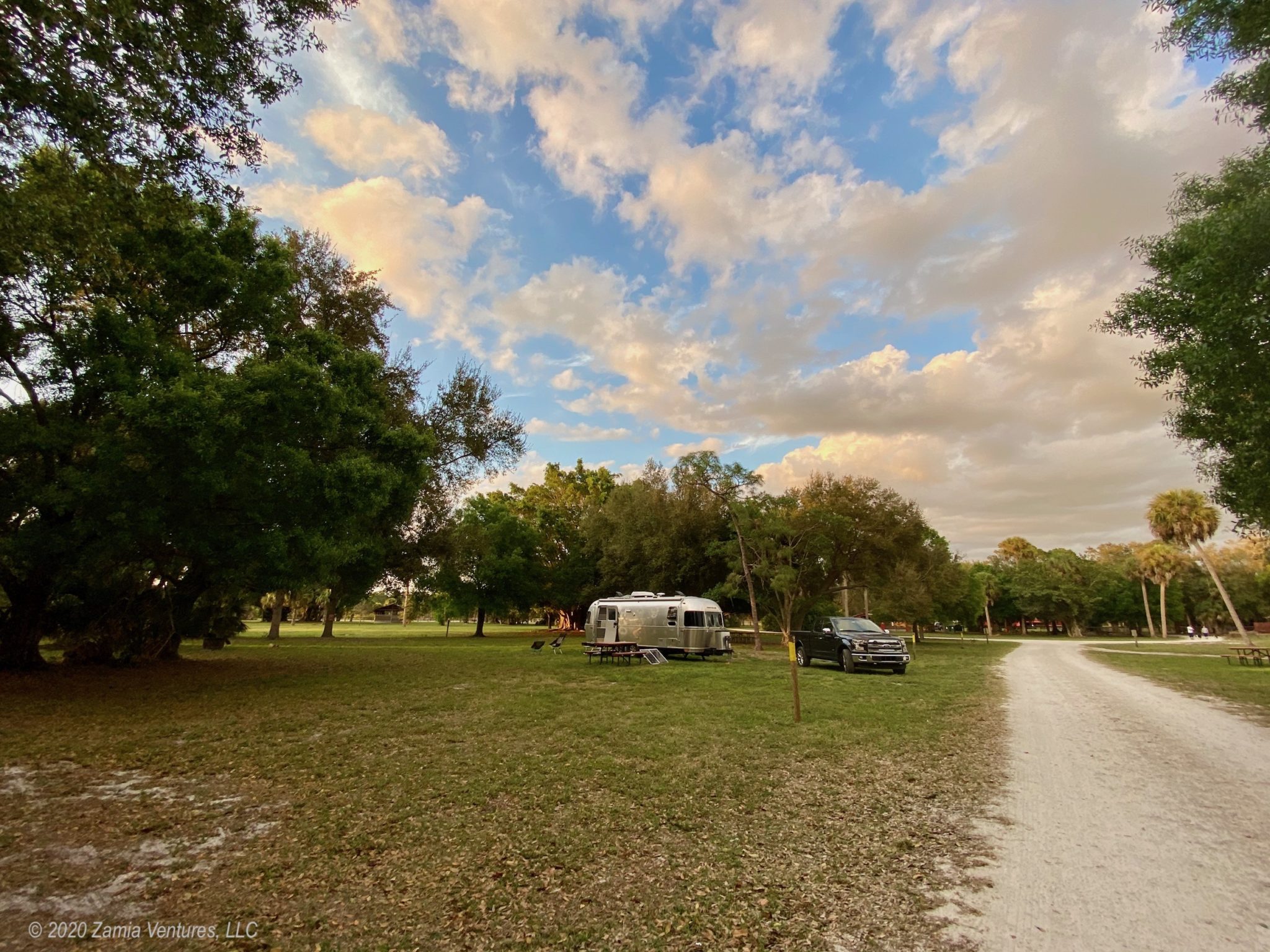
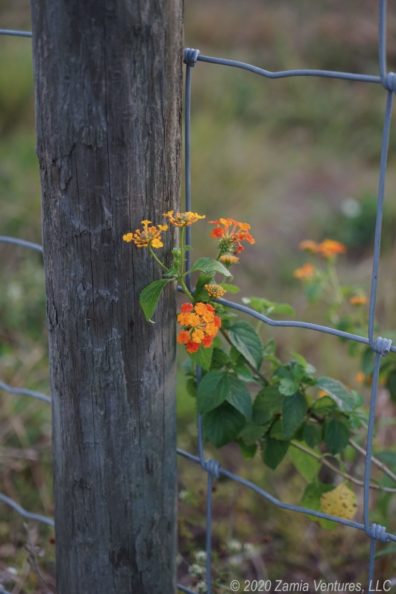
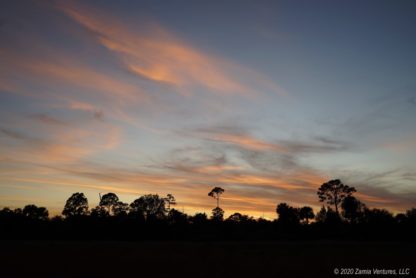
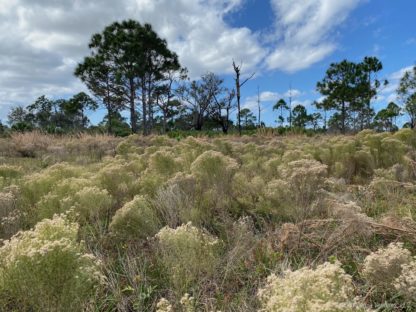
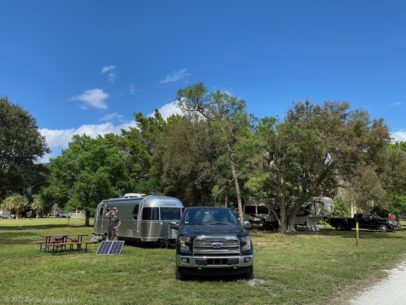
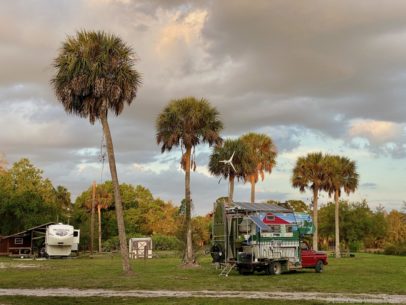
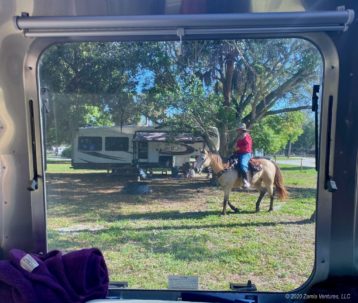
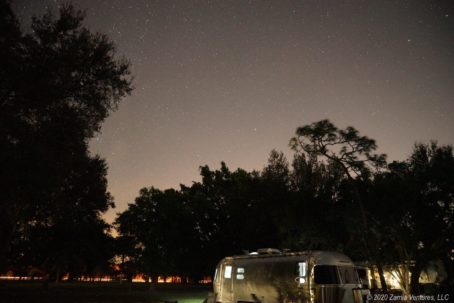
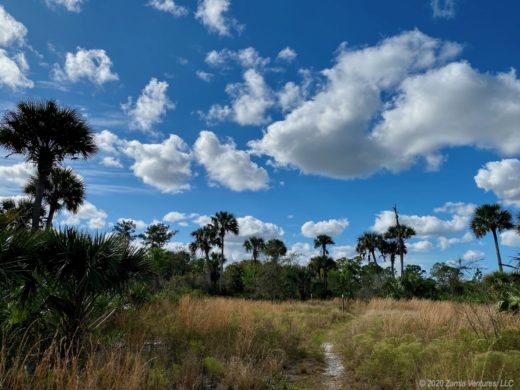
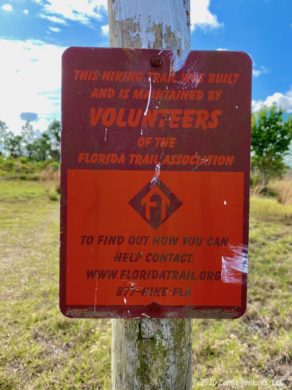
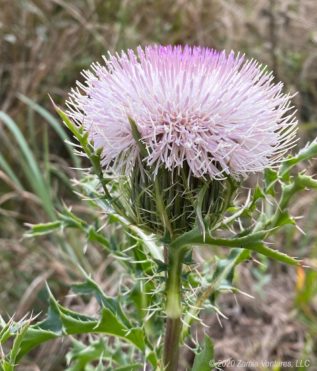
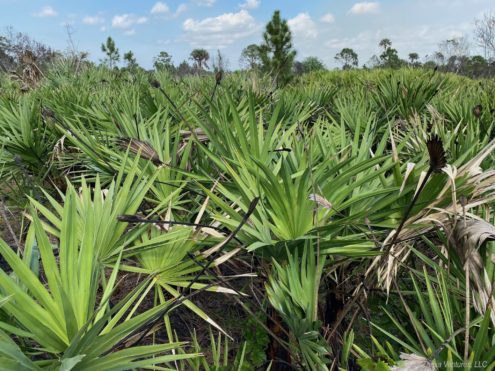
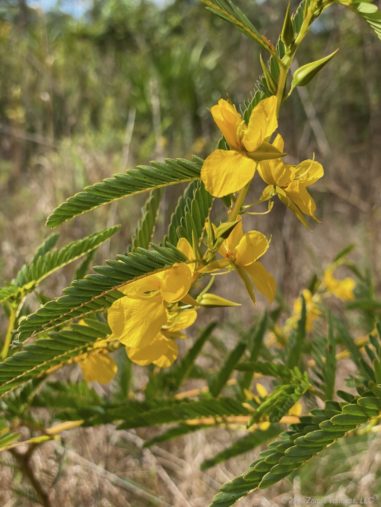
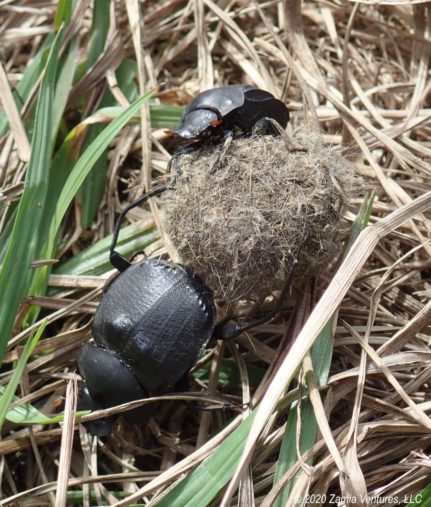
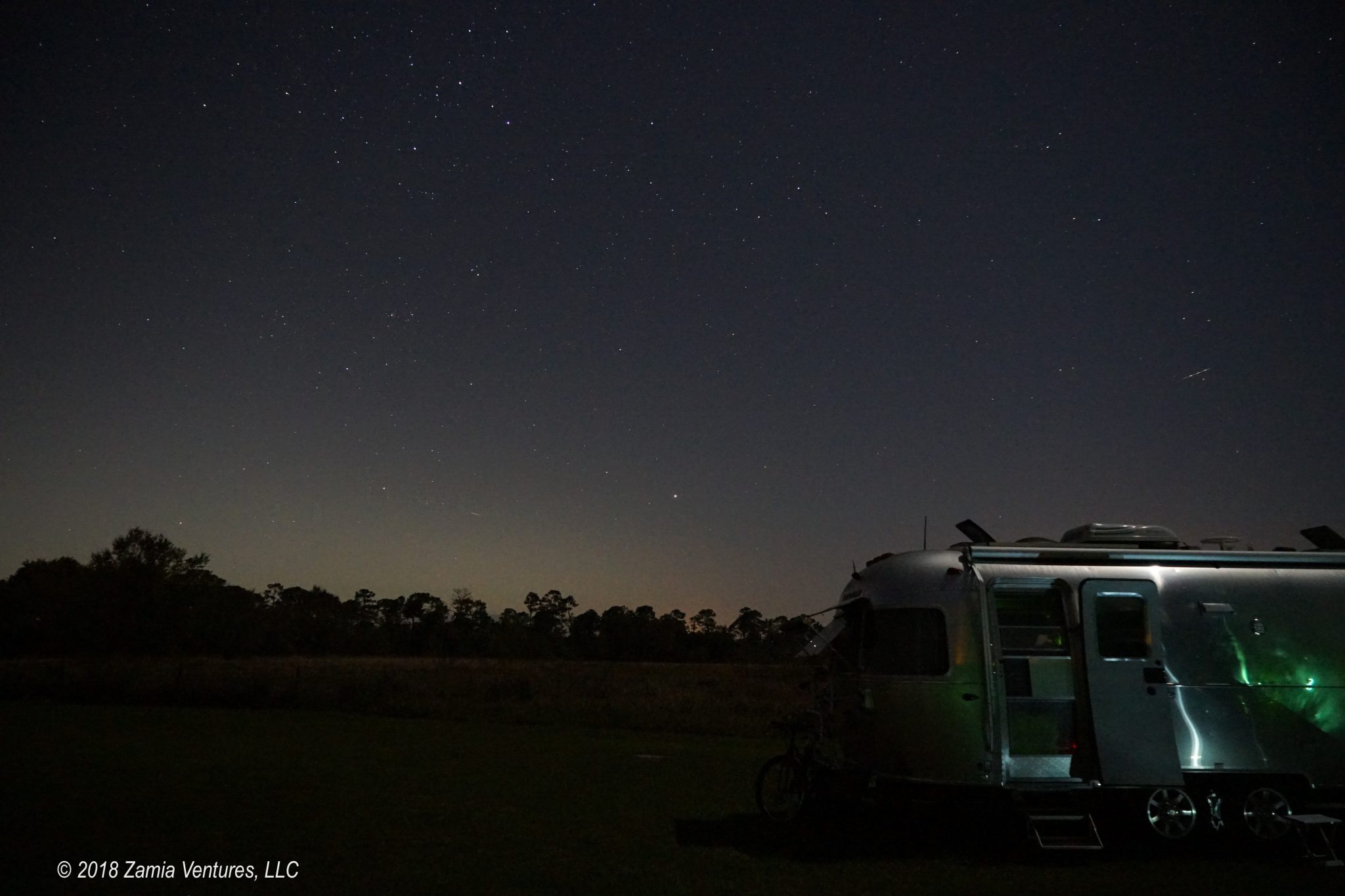
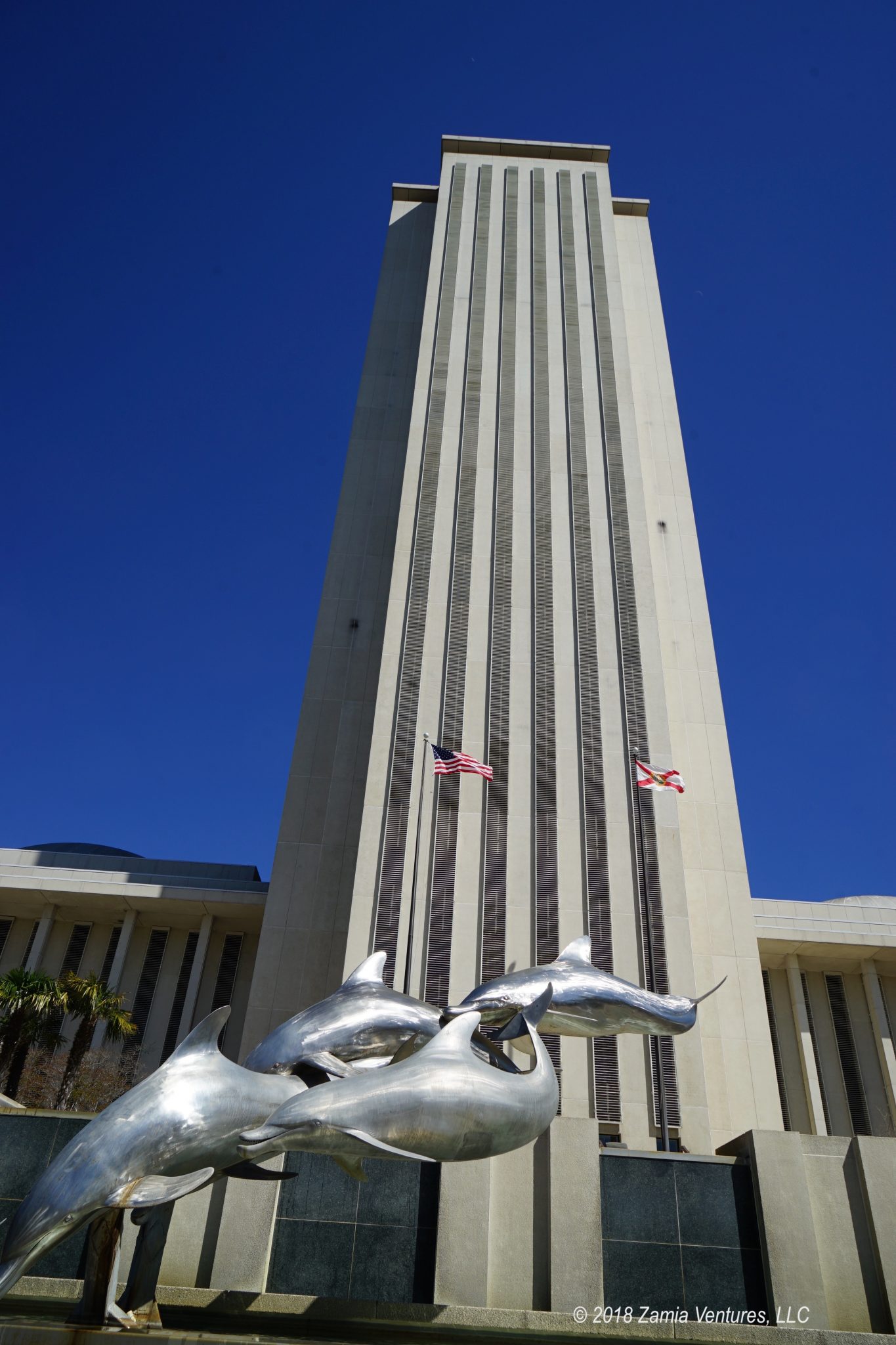
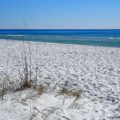
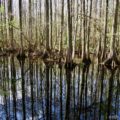
That looks like a beautiful spot! We enjoy (or perhaps more accurately, we’re willing to endure) a few days of dry camping here and there, but as you said, we prefer clearly defined sites and with water available in the campground. And dumpsters. Don’t care about pit toilets. Those things are usually scary. That’s why we haul our own bathroom with us, LOL.
Anyway, that is a great place to know about. And your photos make it look very appealing!
We always enjoy camping in national parks and national forests (both usually dry camping) but not having showers can really be a drag, especially if we are doing a lot of hiking. Even though the shower heads aren’t the greatest, the showers are my favorite thing about DuPuis! It would be really hard to enjoy a stay here without them.
I agree on the pit toilets — we avoid them when possible — but it’s nice to have them as a backup when we have a long stay and we want to stretch our tanks. I mean, ANY services is better than no services in my book.
Florida continues to amaze with its camping resources. That place certainly looks fantastic. And I completely agree with you about having defined camping sites. It’s one of the things we’ve always really liked. We don’t want to be too close to a neighbor, and they probably don’t want to be too close to us. It’s nice when someone else lays out the campground so no one needs to worry about being the jerk.
I laughed at the comment that you need to “present a horse” upon arrival to camp in the equestrian section. I mean, that’s not something you can just fake, but what if it was, like, a miniature horse? Or a pony? Do those count? Or what about a horse sized dog? Because those exist, you know!! We’ve seen em!! LOL…
Anyway, another good spot and the perfect place to rest up before before the much busier but awesome Jonathan Dickinson. Enjoy!!
We realized over the past several years that we really loved defined spots for multiple reasons — we like to keep the neighbors in “their” area, but we also don’t want to deal with the uncertainty of figuring out where we should park ourselves. I really don’t enjoy spending an entire stay second-guessing whether we were being rude by setting up too close to the other campers, which can really be an issue in true boondocking spots.
The actual verbiage on the water management district website about the horse requirement is “Anyone wishing to camp in the equestrian portion of the campground must have a minimum of one horse per Special Use License” but I prefer my formulation. The camp host was extremely diligent about checking people in and verifying their horse where applicable, so I can only assume he would give a pretty strong side-eye to a non-rideable animal like a miniature horse.